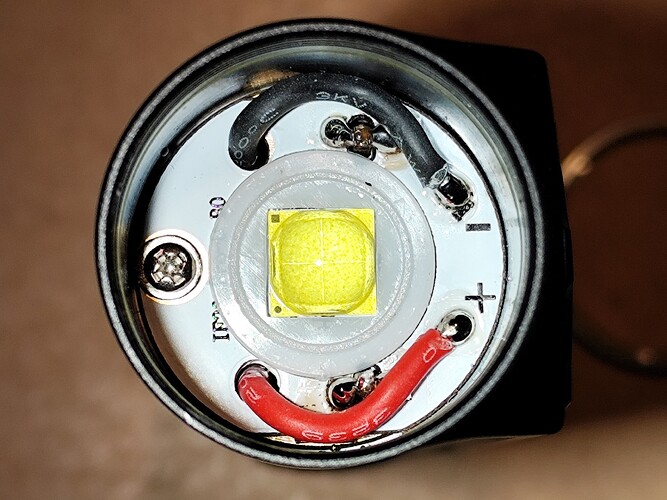When Sofirn introduced a flashlight with a floody side light a few years ago, I was a little skeptical at first. Why would I need it? With a few improvements, the IF23 Pro is now the fourth iteration of this design and I can finally say: Yes, a side light like this is quite handy!
The IF23 Pro let’s you even adjust the color temperature of the side light. RGB lighting is also available and the driver has been upgraded. However, one or two details could still be improved.
You can find the German version of this review on my website: SammysHP Blog › Sofirn IF23 Pro
The flashlight was provided by the manufacturer for this review. Thank you very much!
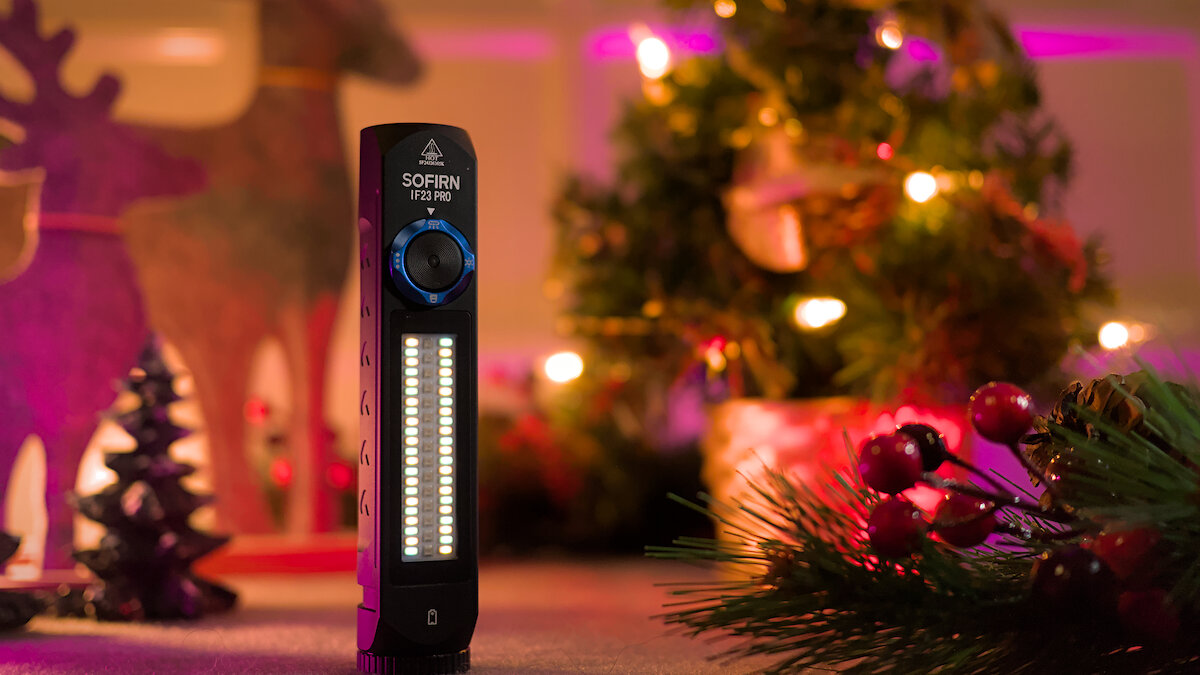
Evolution of the IF23 / IF24
The Sofirn IF23 (without Pro) was released in January 2023. This year, the IF24 and IF24 Pro followed in quick succession. The 18650 battery made them somewhat more compact and lighter. In addition, a magnetic control ring was added. This control has now been adopted for the IF23 Pro. In addition, there is the adjustable color temperature of the side light and a new record of the maximum brightness in this series.
| IF23 | IF24 | IF24 Pro | IF23 Pro | |
|---|---|---|---|---|
| Release | 01/2023 | 03/2024 | 04/2024 | 10/2024 |
| Battery | 21700 | 18650 | 18650 | 21700 |
| Spot LED | Cree XHP50.2 (6000 – 6500 K) |
Luminus SST-40 (6000 – 6500 K) |
Luminus SFT-40 (5000 K) |
Cree XHP70.2 |
| Flood LED | 20 * CSP1313 | 22 * CSP1313 (5000 K) |
22 * CSP1313 (5000 K) |
22 * 2600 – 2800 K 22 * 6000 – 6500 K |
| RGB LED | 10 * JF-387F-Y | 15 * FY-1615RGY | 15 * FY-1615RGY | 15 * RGB |
| Brightness | 4000 lm | 2000 lm | 1800 lm | 5000 lm |
| Driver | FET | FET | Buck (Spot) FET (Flood) |
Boost (Spot) FET (Flood) |
| User interface | Button | Button Ring |
Button Ring |
Button Ring |
| Powerbank | –– | –– | ||
| Length | 120 mm | 126 mm | 126 mm | 133 mm |
| Weight (with battery) |
191 g | 145 g | 145 g | 195 g |
The IF23 Pro is therefore the flagship of the IF23 / IF24 series from Sofirn. Not only in terms of performance, but also in terms of size and weight.
Overview of hardware
The flashlight comes with the usual accessories in sturdy packaging with a magnetic latch. There are two versions, one with and one without a rechargeable battery.
- Sofirn 21700 Li-ion battery with 5000 mAh (unprotected, flat-top, 3.78 V at arrival)
- Lanyard
- Clip
- 2x replacement o-ring
- USB-C charging cable
- Manual (EN, RU, CN)
The is easy to understand and, in addition to some specifications, consist mainly of a comprehensive diagram explaining the operation.
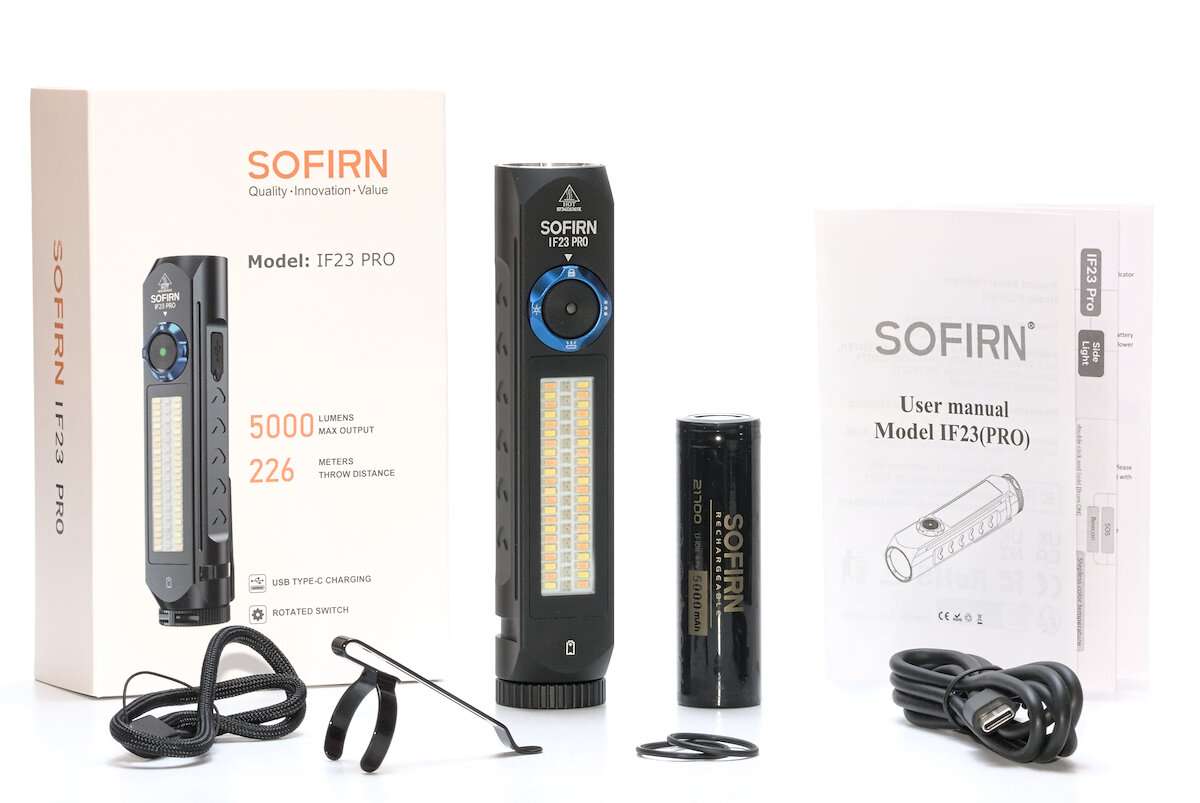
Even for a flashlight with a 21700 battery, the IF23 Pro is huge. Not only does it feel massive, it also weighs just under 200 g.
Length: 133.0 mm
Diameter (Head): 27.4 mm
Middle section: 28.6 × 25.0 mm
Diameter (Tailcap): 27.5 mm
Weight (without battery): 128.5 g
Weight (21700 battery): 66.5 g
Weight (total): 195.0 g
The battery takes up about half the length. The rest is needed for the driver and the spotlight. I am curious to see whether Sofirn can reduce the space requirement and offer a shorter model. If necessary, I wouldn’t miss the magnetic ring control.
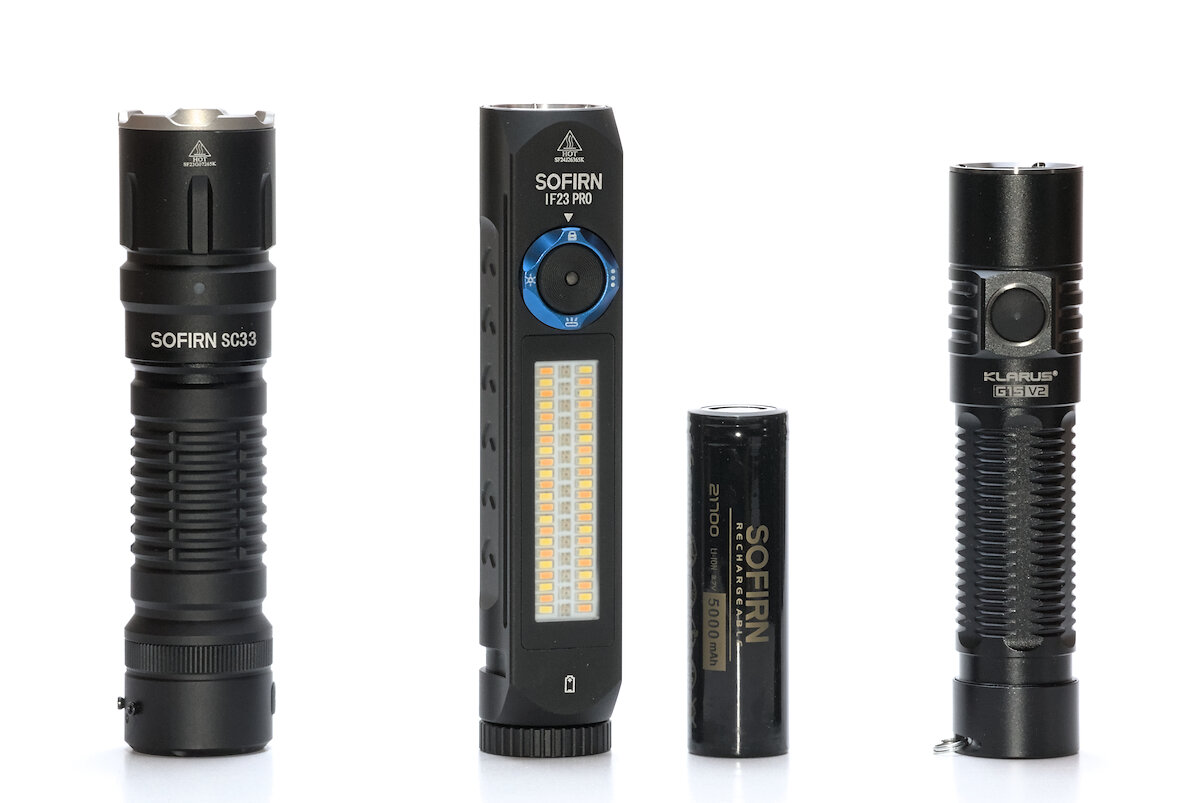
Due to the large side light, the shape is a combination of round and square. The basic shape consists of a cylinder, as you would expect from a flashlight. One side has been shaped into a rectangular block for the side light. This shape also prevents the flashlight from rolling away.
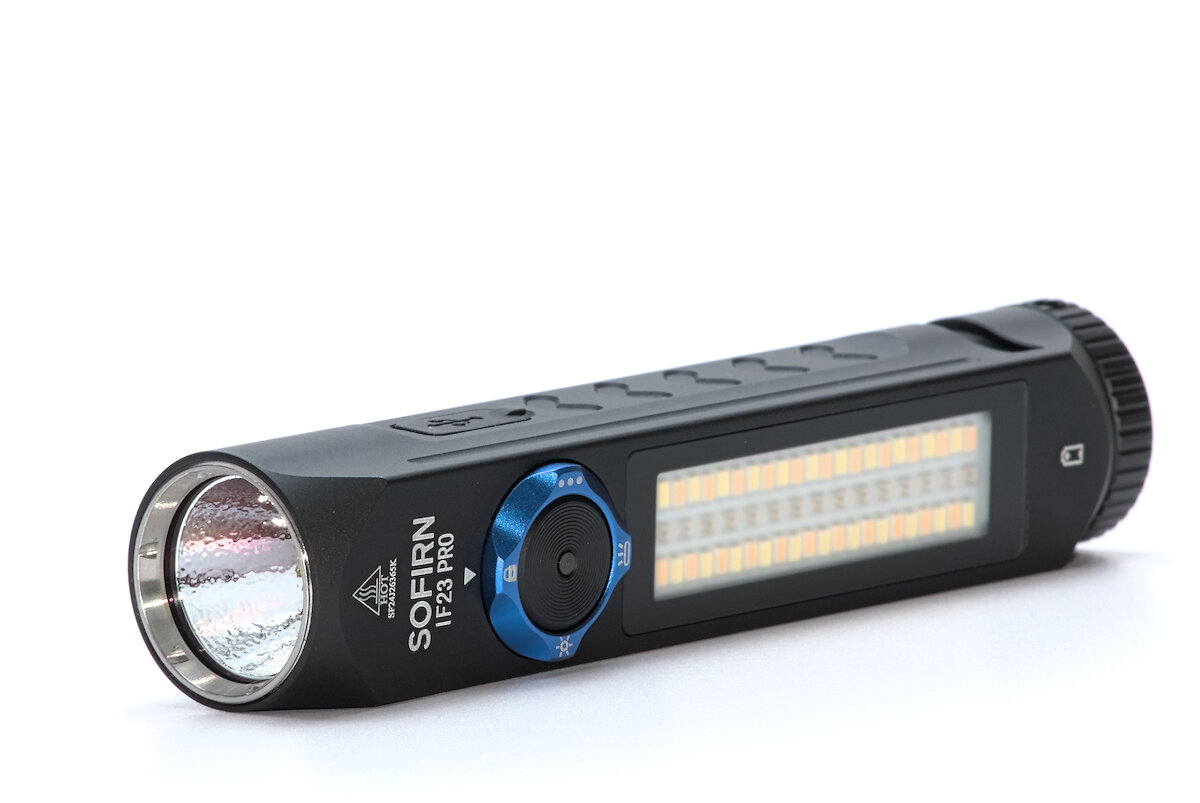
The sides are flattened and have a milled pattern to increase grip.
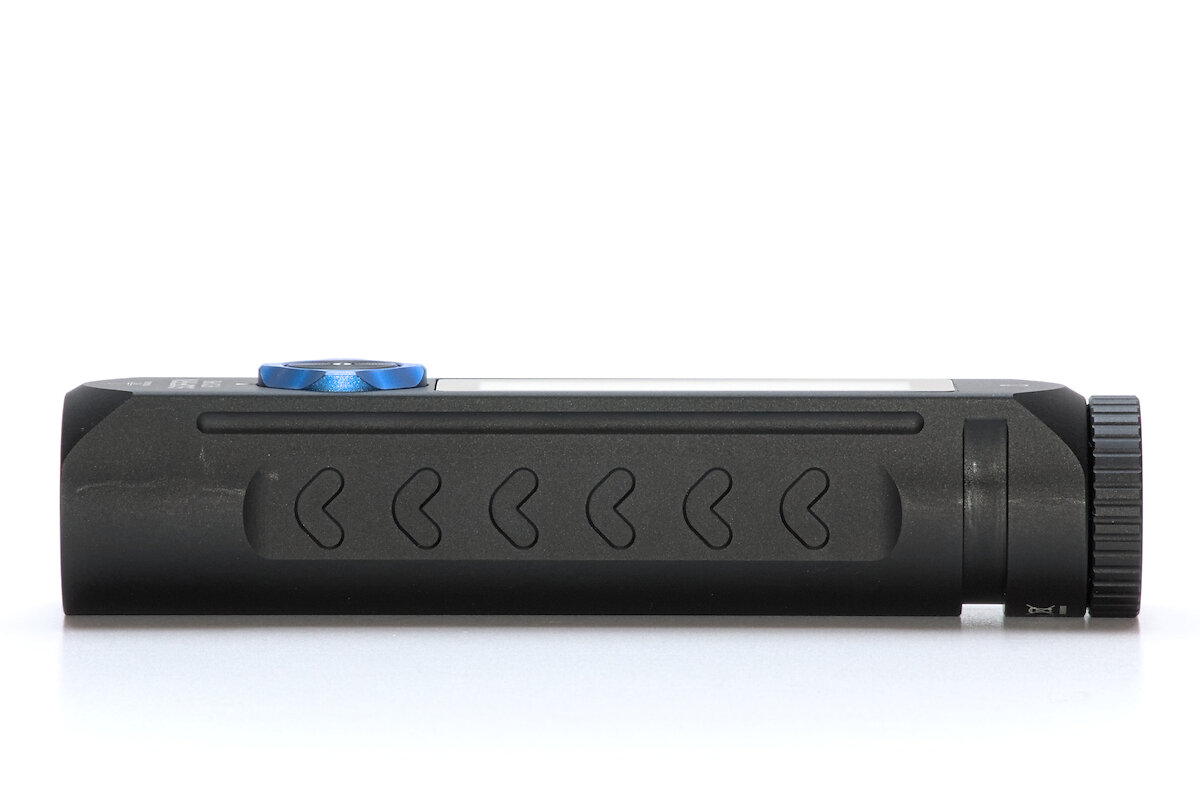
The flat side contains the button, magnetic control ring and the side light.
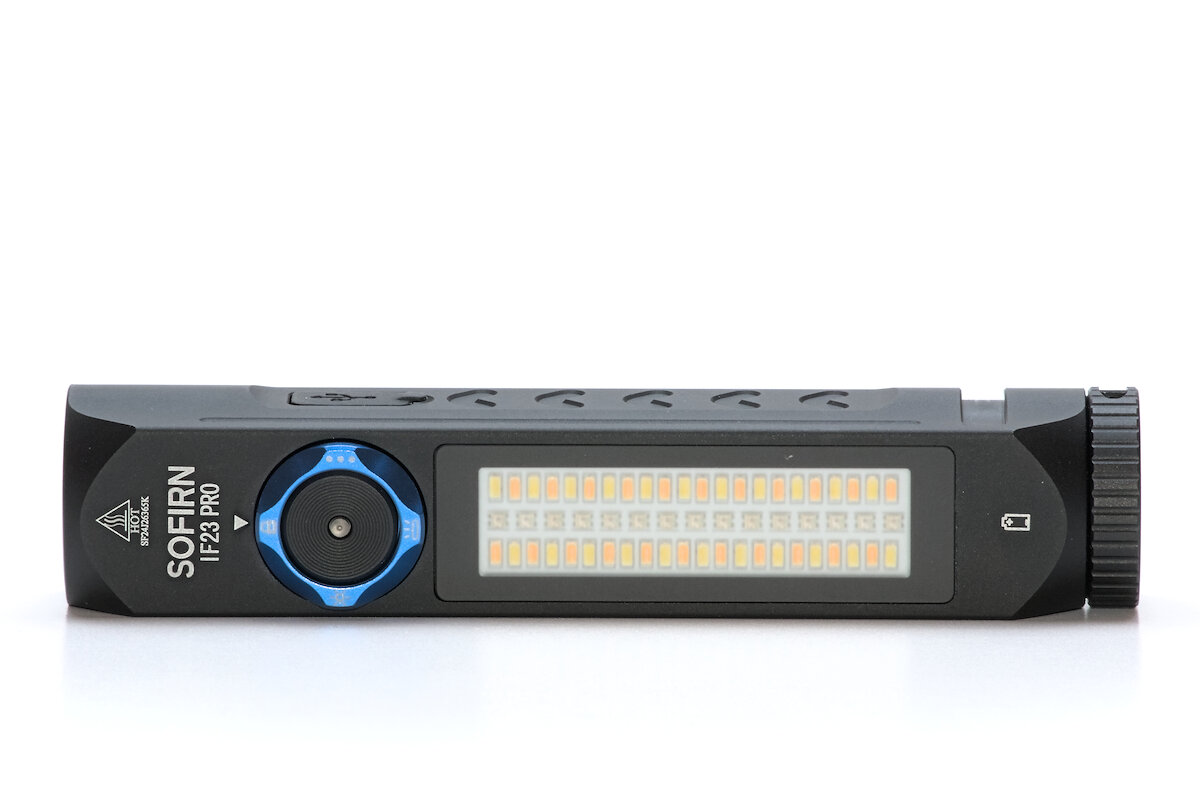
The reflector and glass are held in place by a screwed-in stainless steel bezel. Otherwise, the front end is unspectacular.
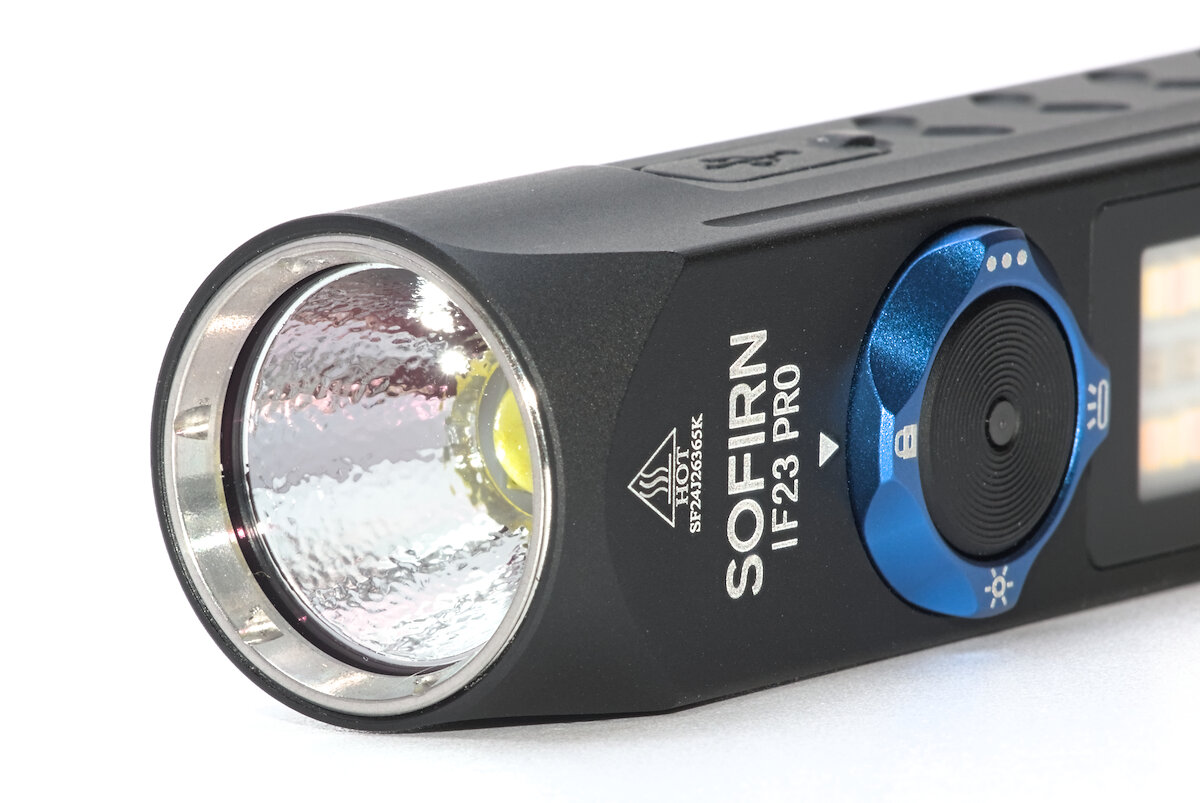
The supplied clip can be attached at the rear end. The shape of the clip allows the flashlight to disappear almost completely into the pocket - provided the pocket is deep enough.
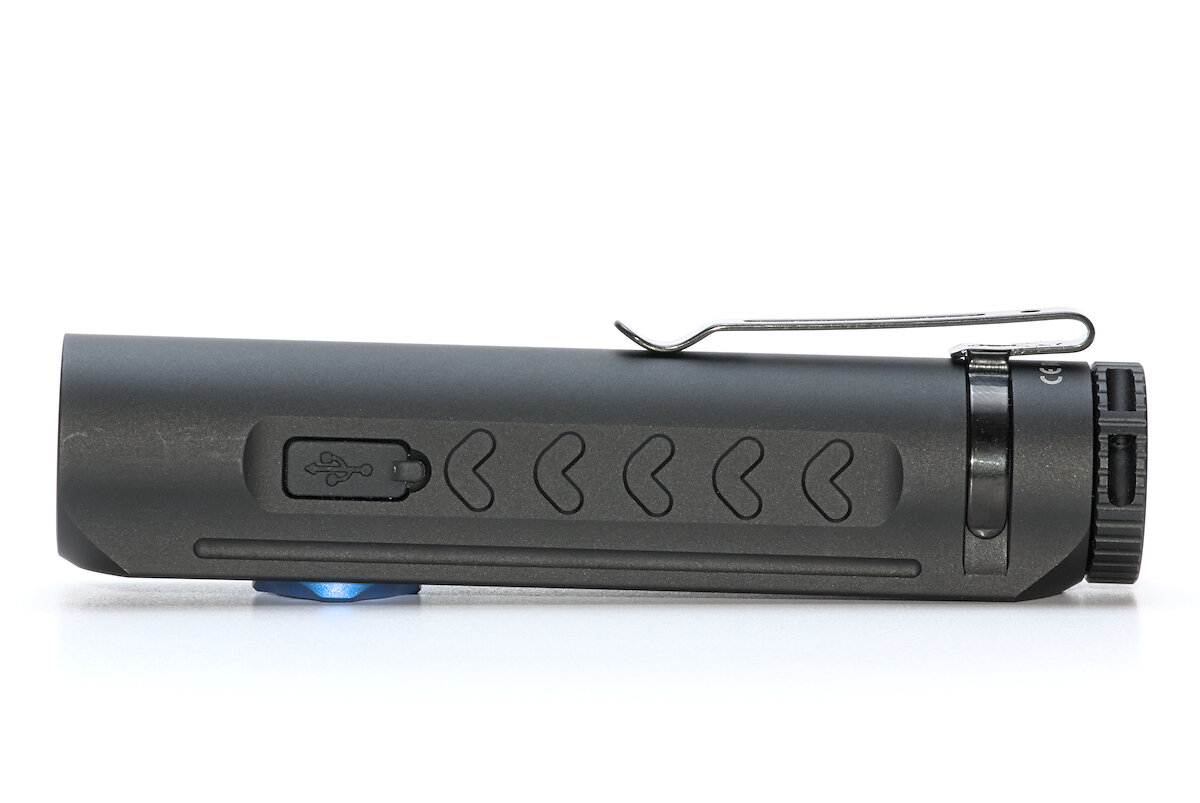
A hole in the tailcap allows you to attach a lanyard. The edges are quite sharp, so it is better to use a small key ring to protect the material of the lanyard.
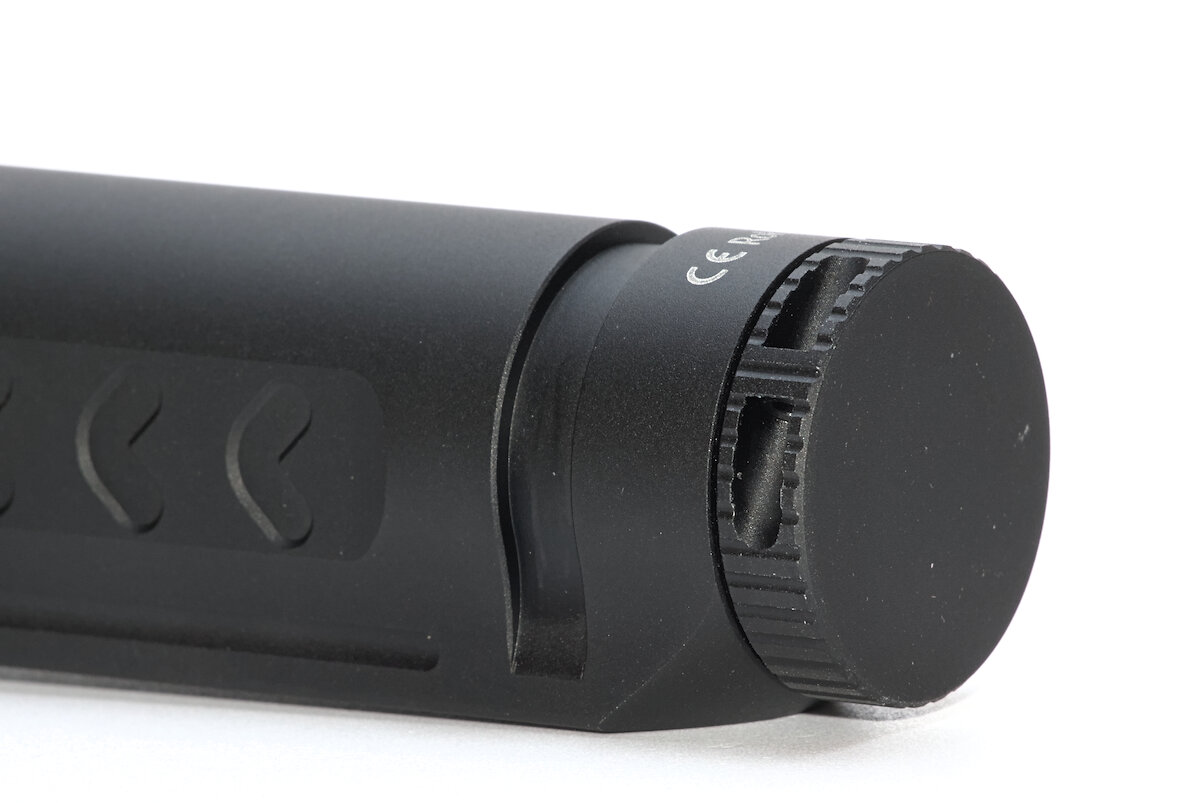
A magnet in the tailcap was probably intended to attach the flashlight to magnetic surfaces. However, the magnet is so weak (or the flashlight so heavy) that the flashlight won’t hold reliably in horizontal orientation. On the other hand, it is ideal for attracting metal shavings. An attempt to remove the magnet unfortunately failed due to the amount of glue.
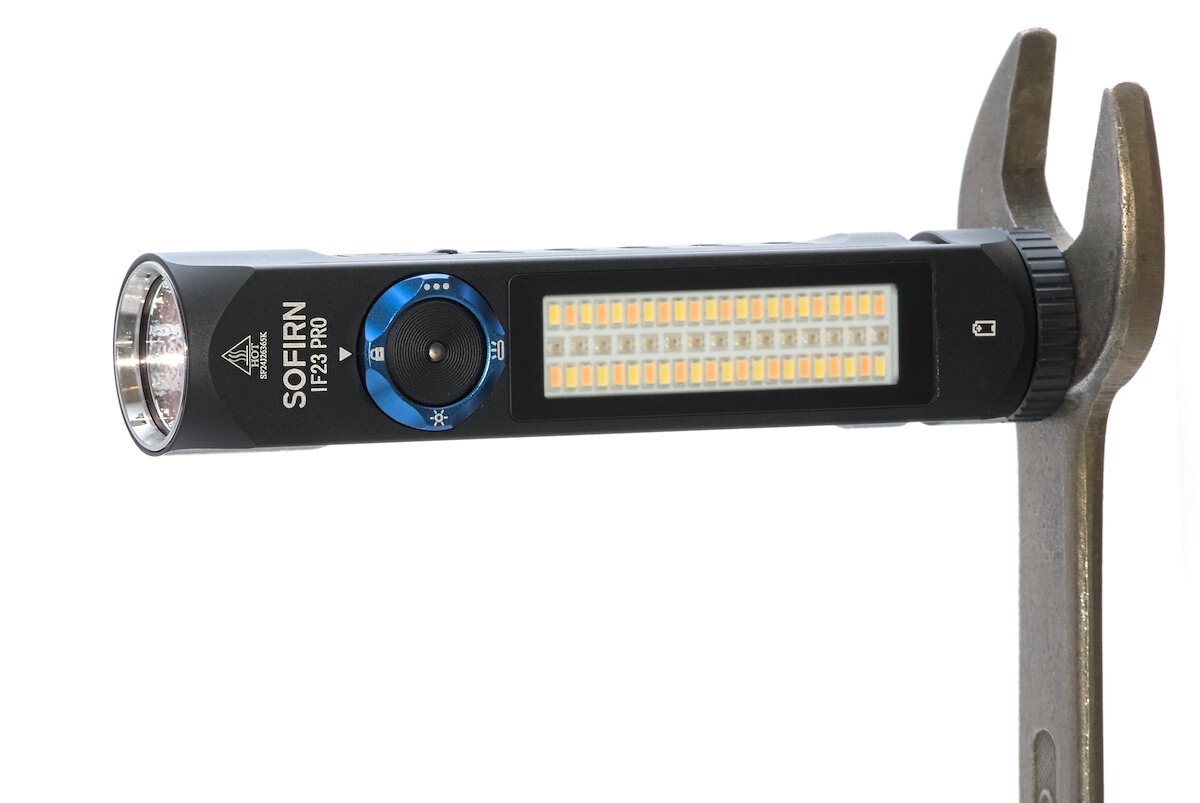
The flashlight is charged via a USB-C port on the side. It is protected from dirt and water by a silicone cover. When closed, the cover is flush, but can still be opened easily with a fingernail.
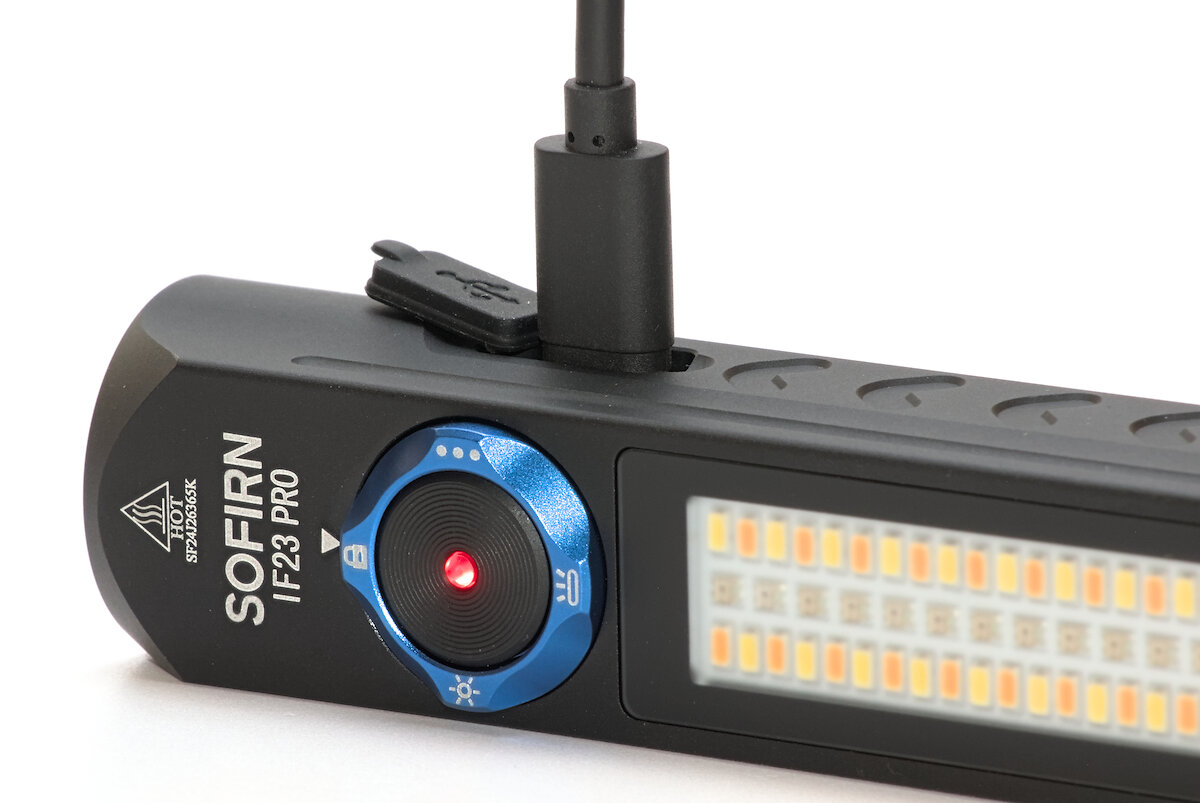
Provided you have a suitable power supply and cable, the flashlight charges with up to approximately 3 A. However, it took me a few attempts before the USB plug made good contact with the power supply. With this charging power, a higher voltage via QC/PD would be more suitable. When charging, the status LED in the switch lights up in red and changes to green once charging is finished. During the charging process, the flashlight can be used without any restrictions.
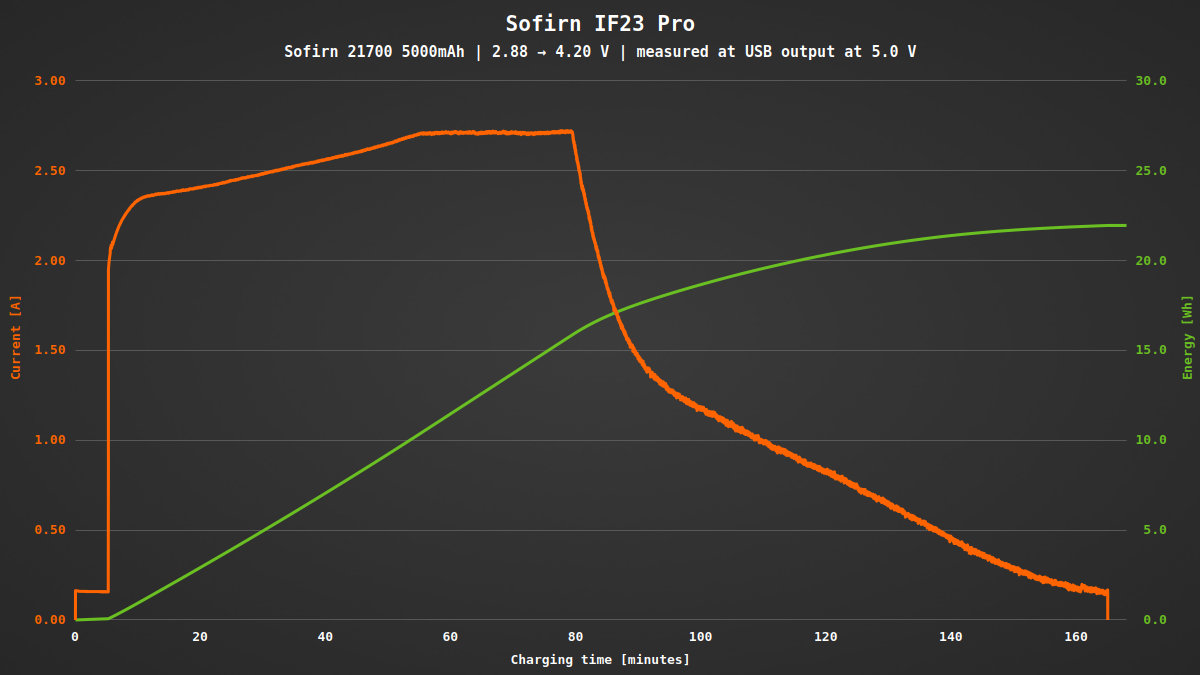
The IF23 Pro can also be used as a power bank, for example to recharge a smartphone in an emergency.
There is a strong spring in both the head and the tailcap. Still, there is not enough space for a protected 21700 battery. However, both flat and button-top 21700 batteries fit (and 18650 batteries via an adapter).
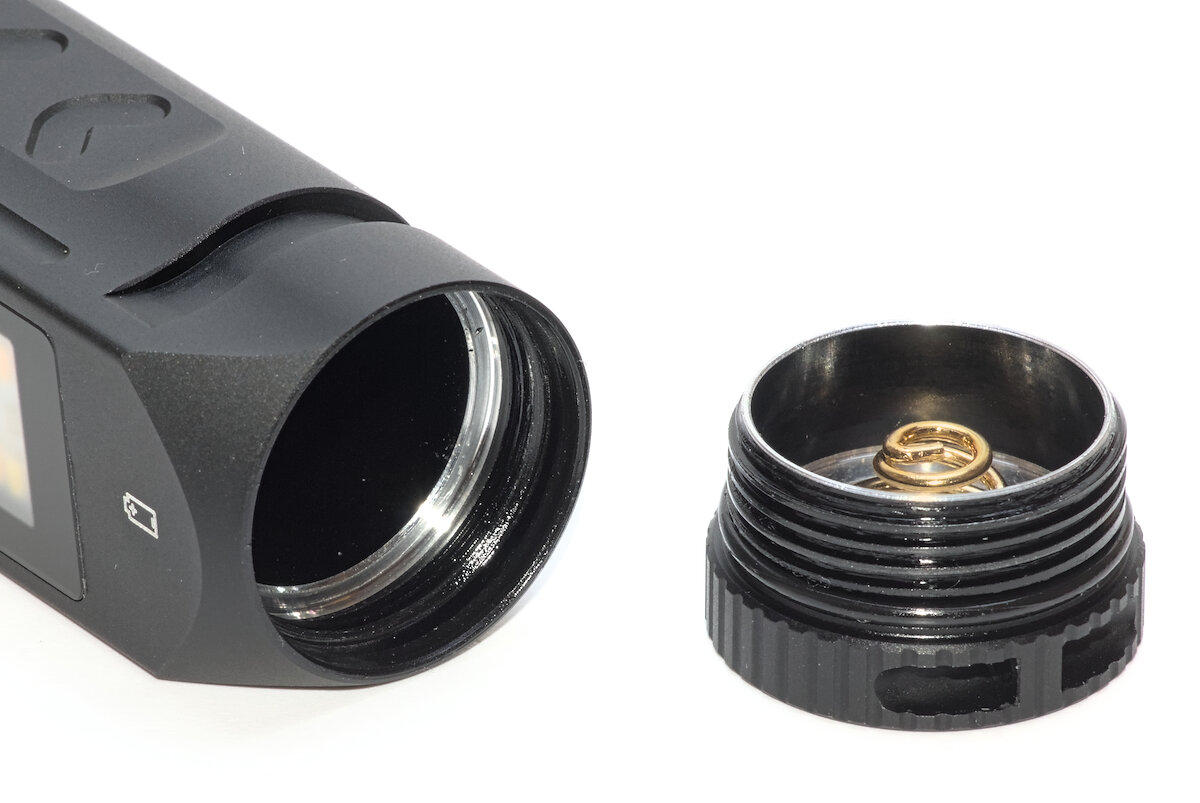
The manual states that the flashlight is protected against water according to IP66, which translates as “protection against strong water jets”. Heavy rain should therefore not be a problem, but it is perhaps better not to submerge it. It should withstand drops of up to one meter. The build quality is good and the matt black anodization feels very nice.
User interface
The IF23 Pro is primarily operated via an electronic switch, as you would expect from other lamps. However, there is also a rotary ring for selecting the channel (spot, floodlight, RGB or lockout).
The button reacts with a clear click when pressed with a force of around 700 g. The rotary ring turns smoothly and has precise detents. It can be easily operated with one finger. However, it is difficult to find the desired mode, as the four positions are only differentiated by the engraving. Either an end stop or a tactile marking for orientation would be useful.
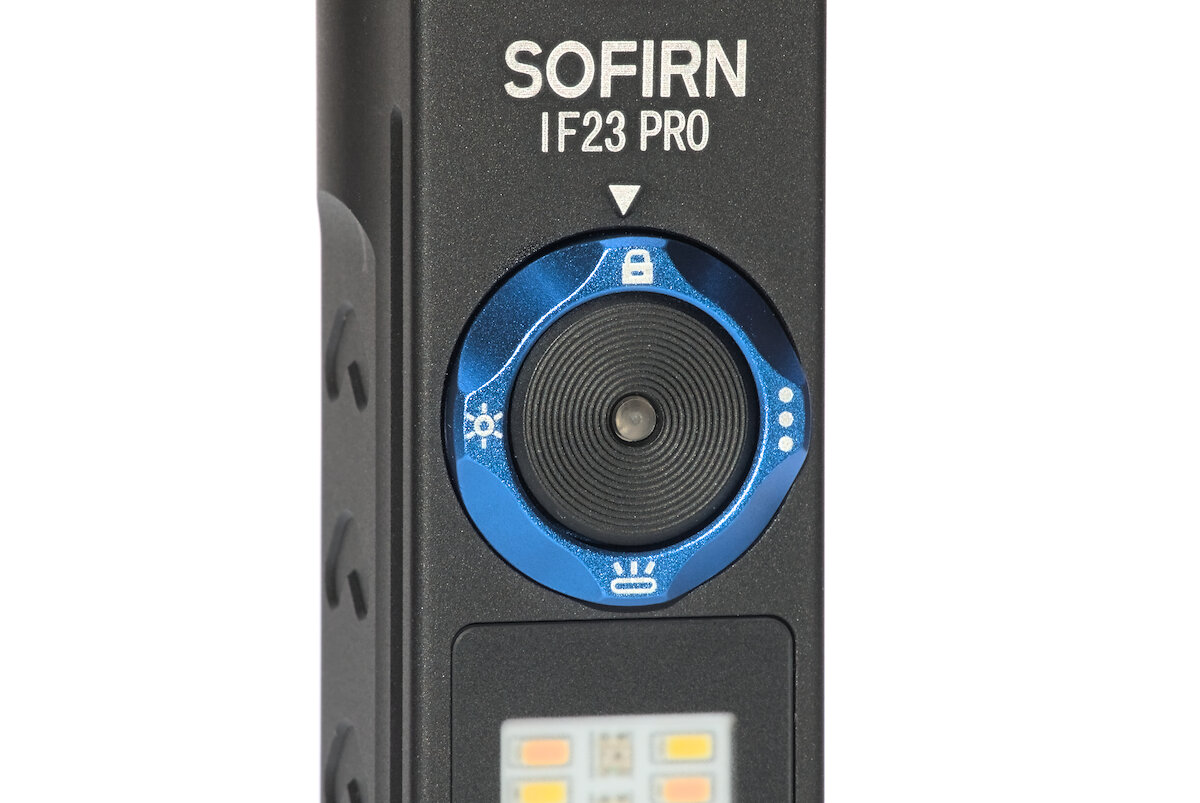
Operation differs slightly depending on the operating mode. For the spotlight, it follows the familiar scheme of other Sofirn lamps with five levels, including Moon and Turbo with direct access. The strobe is somewhat hidden and can only be accessed via Turbo.
Spot:
| State | Action | Function |
|---|---|---|
| Off | 1 click | Turn on (last used brightness, except Moon and Turbo) |
| Off | 2 click | Turbo |
| Off | Hold | Moon |
| On | 1 click | Turn off |
| On | 2 click | Turbo |
| On | Hold | Increase brightness (Low → Medium → High) |
| Turbo Strobe SOS Beacon |
1 click | Previous brightness or turn off |
| “”" | 2 click | Next mode (Turbo → Strobe → SOS → Beacon) |
The floodlight channel uses a smooth ramping for brightness. The color temperature can also be adjusted “smoothly”. In practice, you have the choice between the two extreme values for warm and cool white and something in between.
Flood:
| State | Action | Function |
|---|---|---|
| Off | 1 click | Turn on (last used brightness) |
| Off | 2 click | High |
| Off | Hold | Moon |
| On | 1 click | Turn off |
| On | 2 click | High |
| On | Hold | Change brightness smoothly |
| On | click + hold | Change color temperature smoothly |
| High Turbo Strobe SOS Beacon |
1 click | Previous brightness or turn off |
| “”" | 2 click | Next mode (High → Turbo → Strobe → SOS → Beacon) |
The RGB light on the side is a nice gimmick, but can also be put to good use, for example as a position marker. The color adjustment is smooth and a complete cycle takes around 16 seconds. After releasing and pressing the button again, the direction of the color change is reversed. A direct switch between the six colors red, yellow, green, cyan, blue and magenta would be nice. Unfortunately, the brightness of the RGB light cannot be changed.
RGB:
| State | Action | Function |
|---|---|---|
| Off | 1 click | Turn on (last used color) |
| Off | 2 click | Blinking |
| On | 1 click | Turn off |
| On | 2 click | Next mode (Constant → Blink → Police Blink → Rainbow → Waterfall → Droplets → Fade) |
| On | Hold | Change color smoothly (in constant or blinking mode) |
The flashlight cannot be switched on in the “Locked” position. Instead, you have momentary access to the lowest brightness as long as you keep the button pressed. If the flashlight was switched on when it was turned to “Locked”, it can be used in the previous mode until it is switched off.
Lockout:
| State | Action | Function |
|---|---|---|
| Off | 1 click | Show charging state with status LED |
| Off | Hold | Momentary spot moon |
| On | Regular use of last mode until turned off |
Turning the ring does not switch the flashlight on automatically. You can therefore select the desired operating mode when the flashlight is switched off. On the other hand, the flashlight remains switched on if the ring is adjusted when the flashlight was switched on.
There is a small bug in the firmware: If you have used turbo, switched off the flashlight and waited at least five seconds, it switches on again unexpectedly when you turn the ring.
An LED behind the switch indicates the approximate level of charge for five seconds after switching it on. If the battery voltage is low (lower than 3.20 V), the LED blinks red continuously when the flashlight is switched on.
| Color | State of charge |
|---|---|
| Green | 70% – 100% |
| Green blinking | 40% – 70% |
| Red | 10% – 40% |
| Red blinking | < 10% |
Usually a magnetic control ring greatly simplifies the use of the flashlight. Unfortunately in this implementation it is not very helpful because the position cannot be determined by feel. As a result, I was surprised and blinded by the side light more than once when switching on the flashlight in the dark.
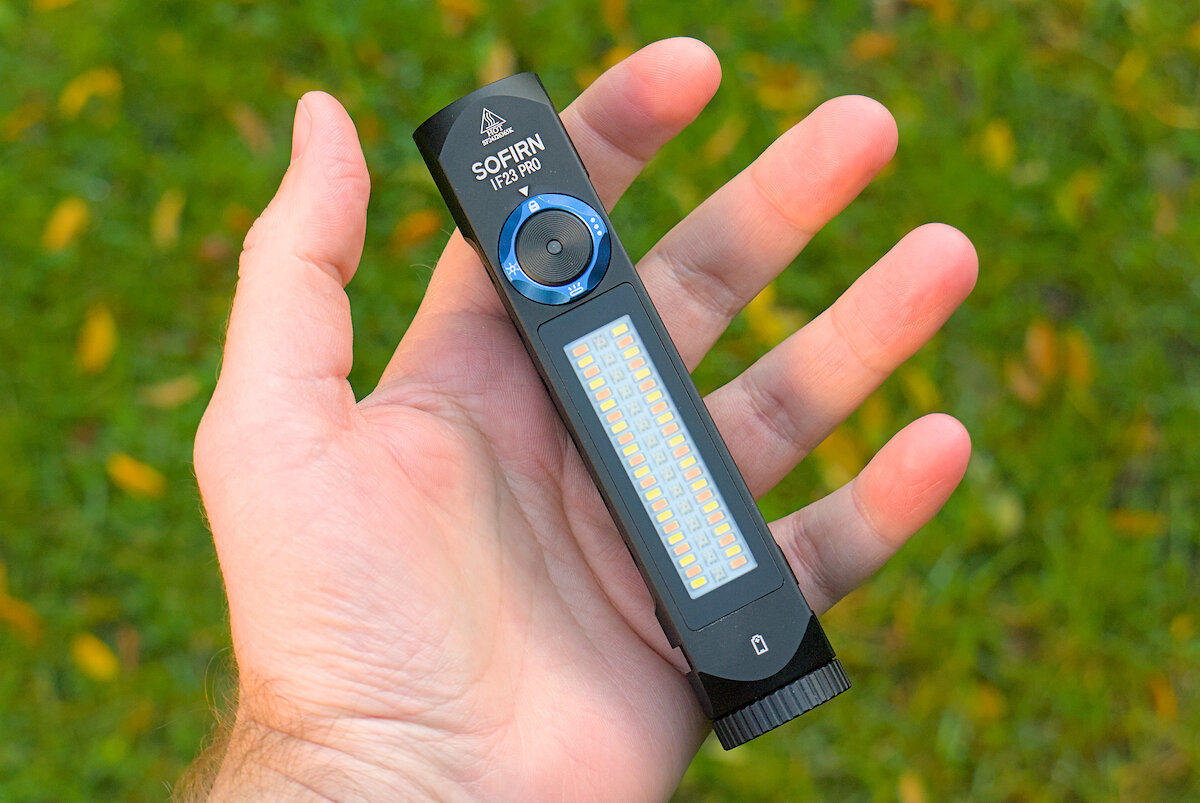
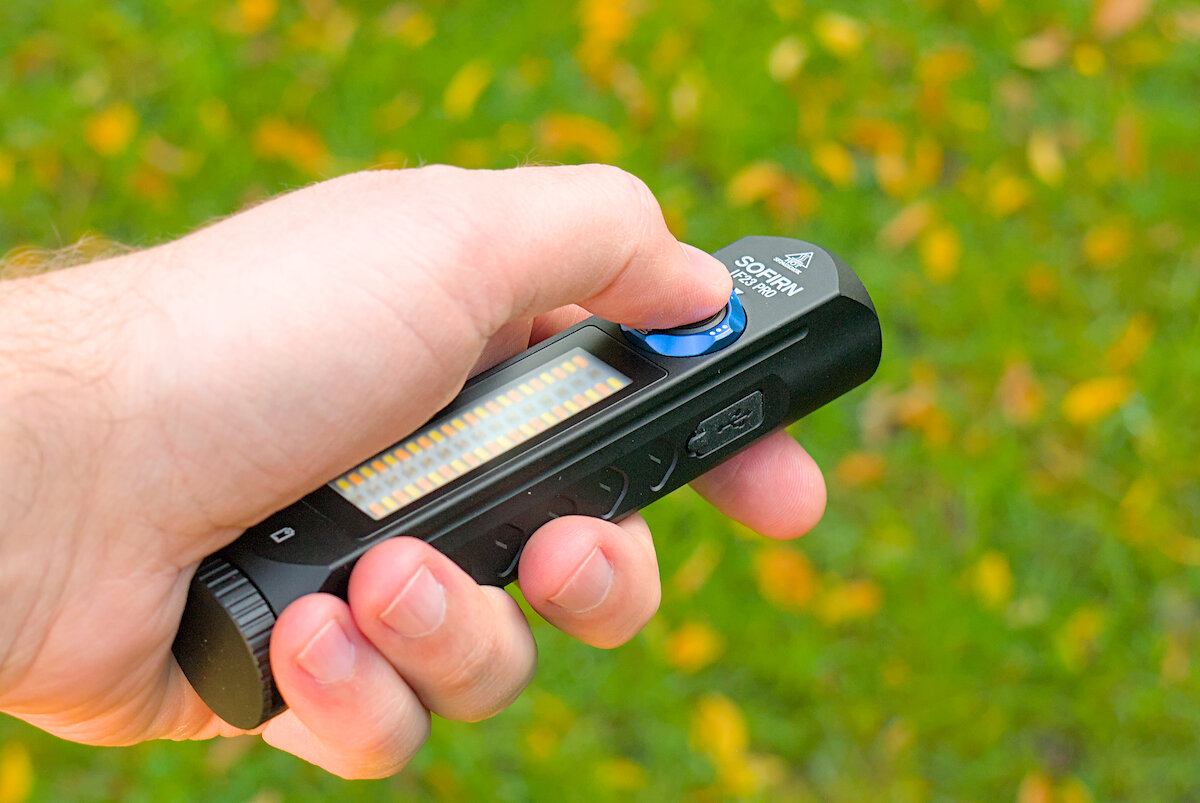
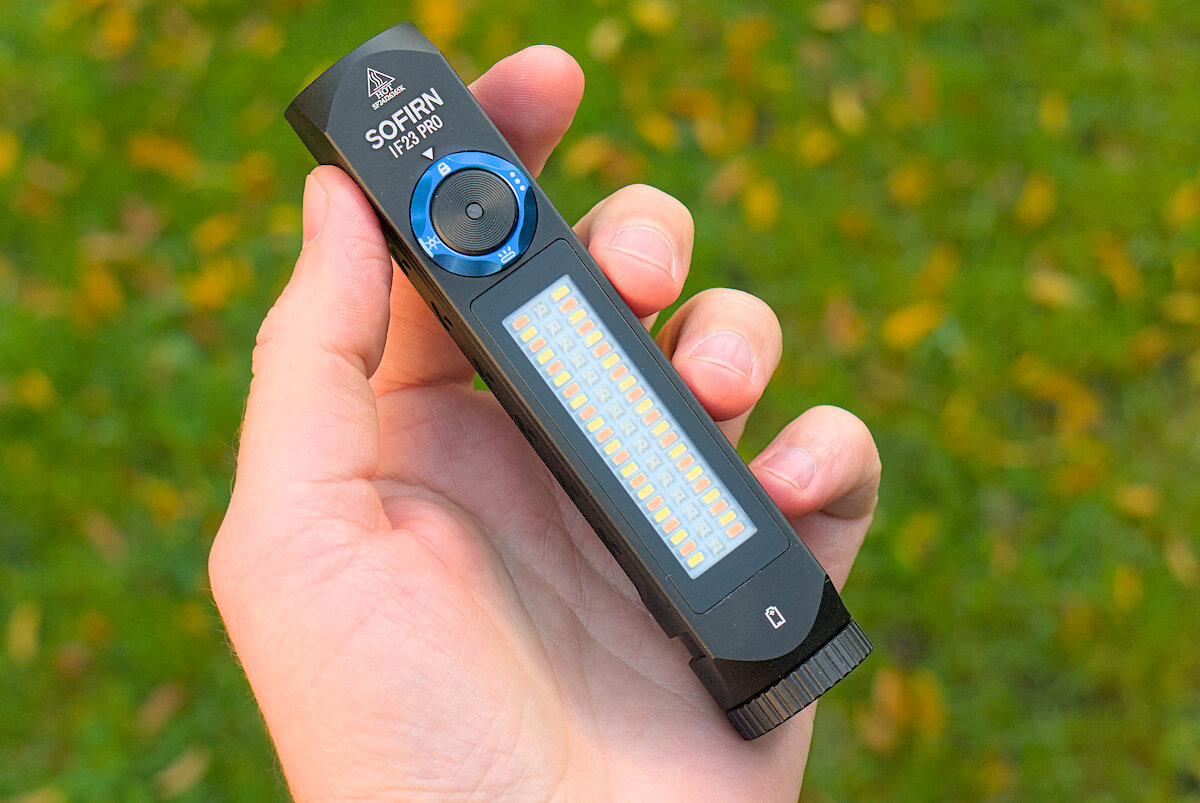
Illumination
The Sofirn IF23 Pro contains a wide variety of LEDs. A Cree XHP70.2 is used for the spotlight. This LED can be operated at high power and produces a lot of light, but the light quality is rather mediocre. Cold white color with a tint shift from spot to spill and low color rendering.
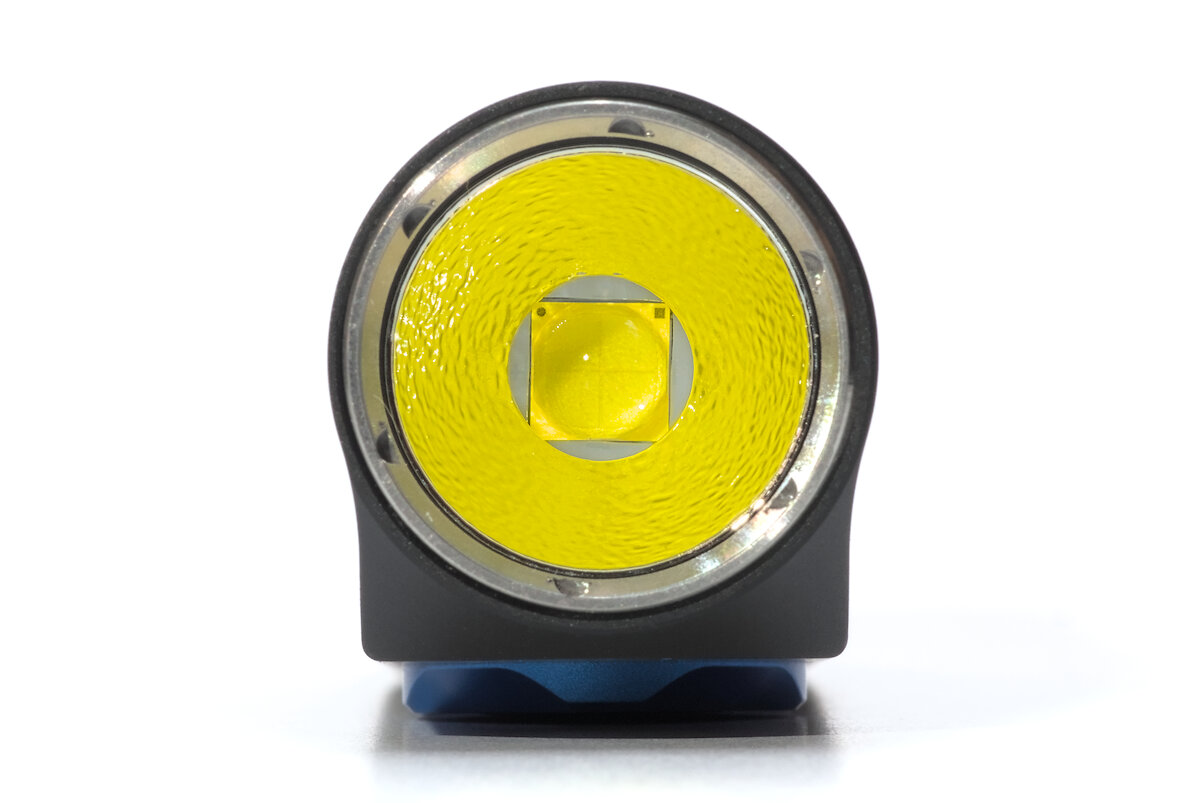
The textured reflector (orange peel) is rather small compared to the LED and produces a floody, soft beam of light. The spot is surrounded by a wide, yellowish corona. Bright yes, beautiful no. The glass has a purple anti-reflective coating.
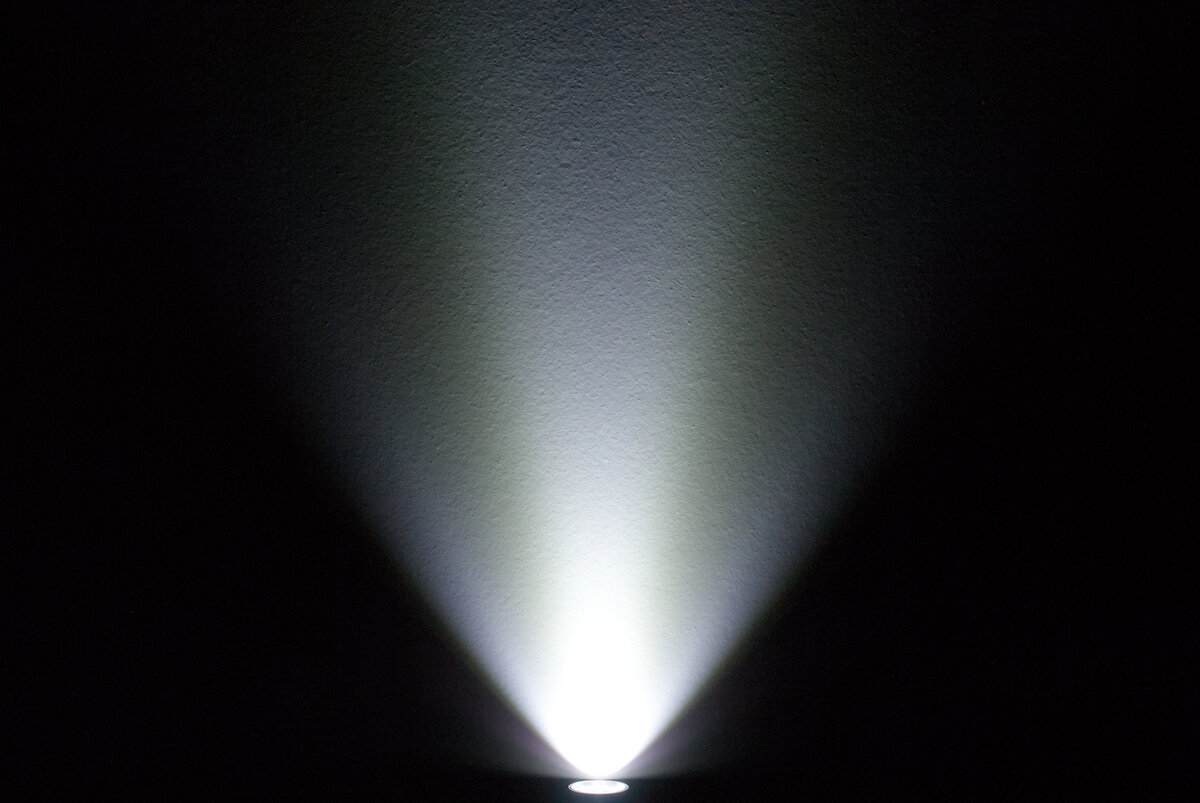
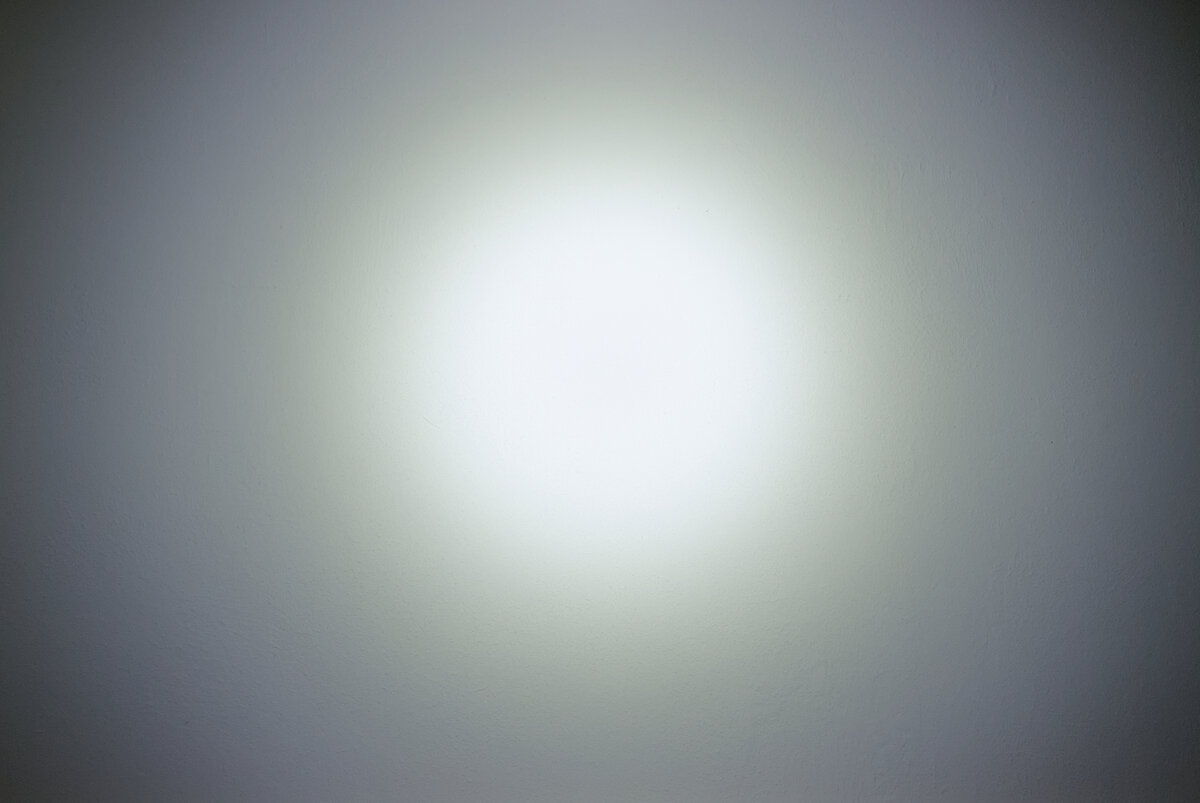
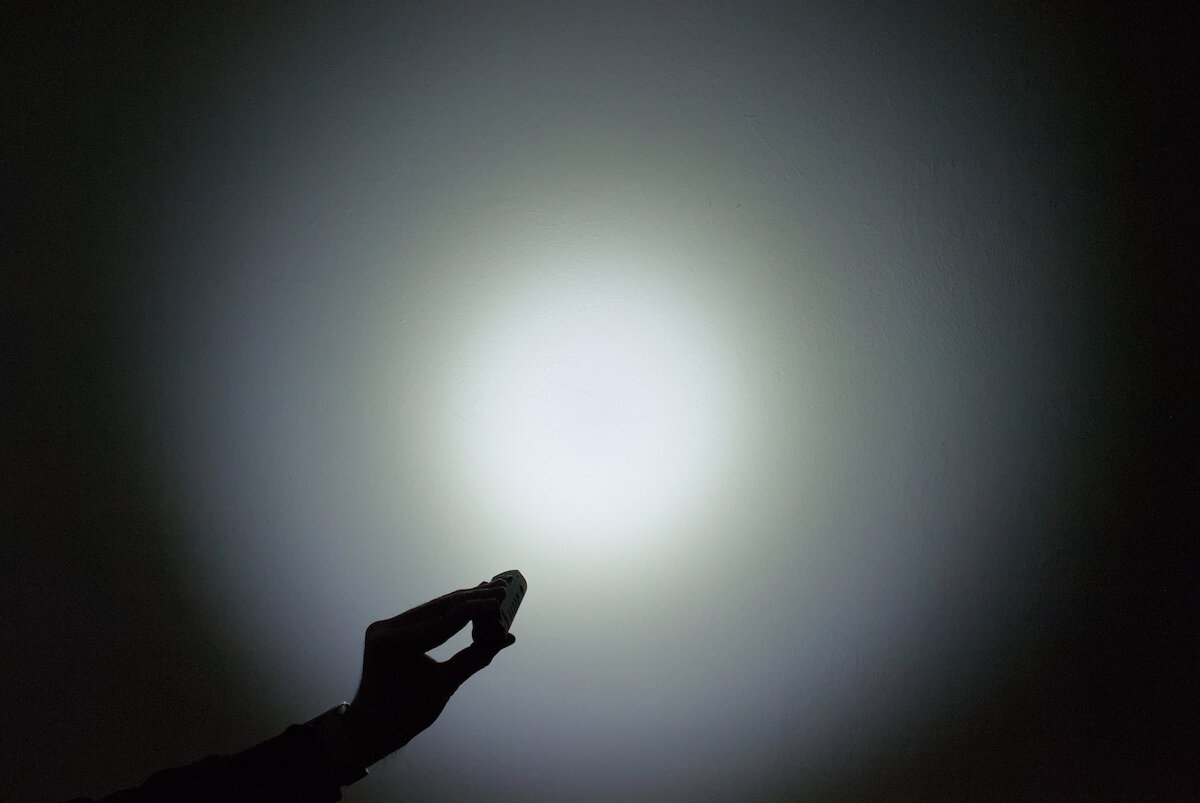
Although the LED produces a lot of light, you shouldn’t expect much throw. The Cree XHP70.3 HI would have been a good alternative, as it produces a more intense spot without the dome and results in a significantly weaker tint shift.
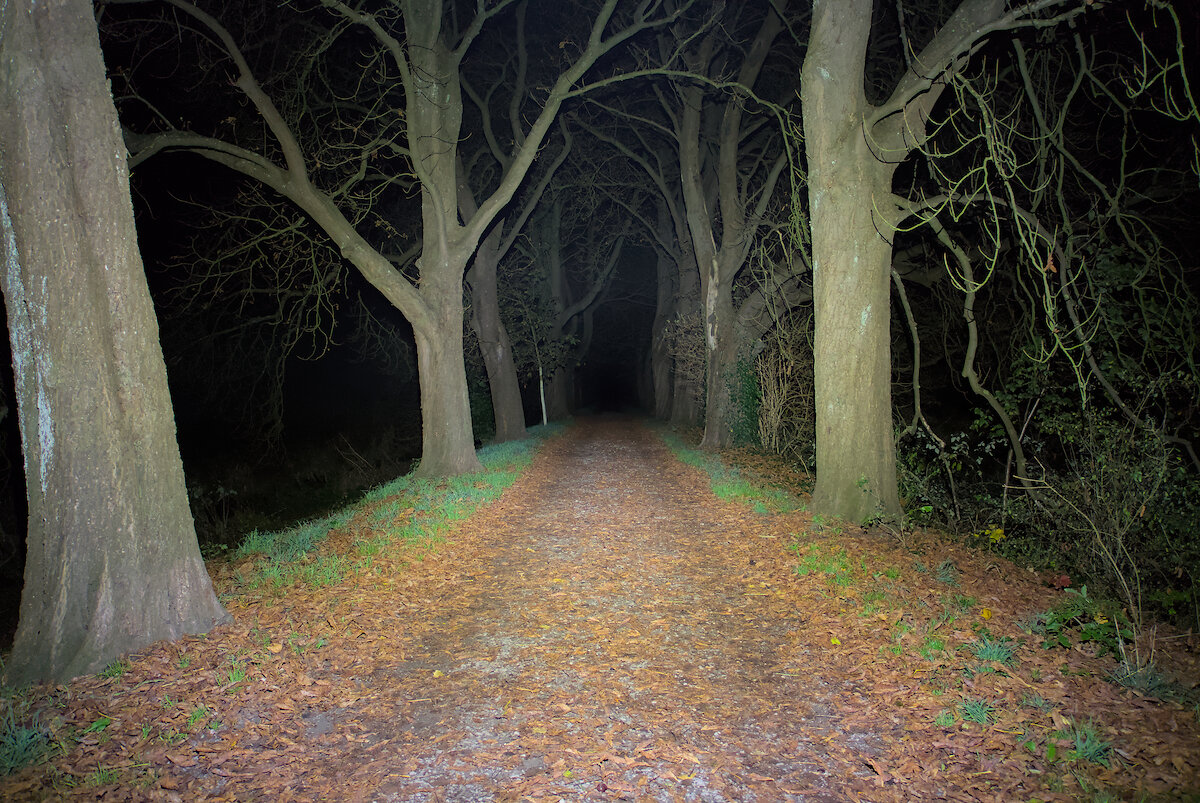
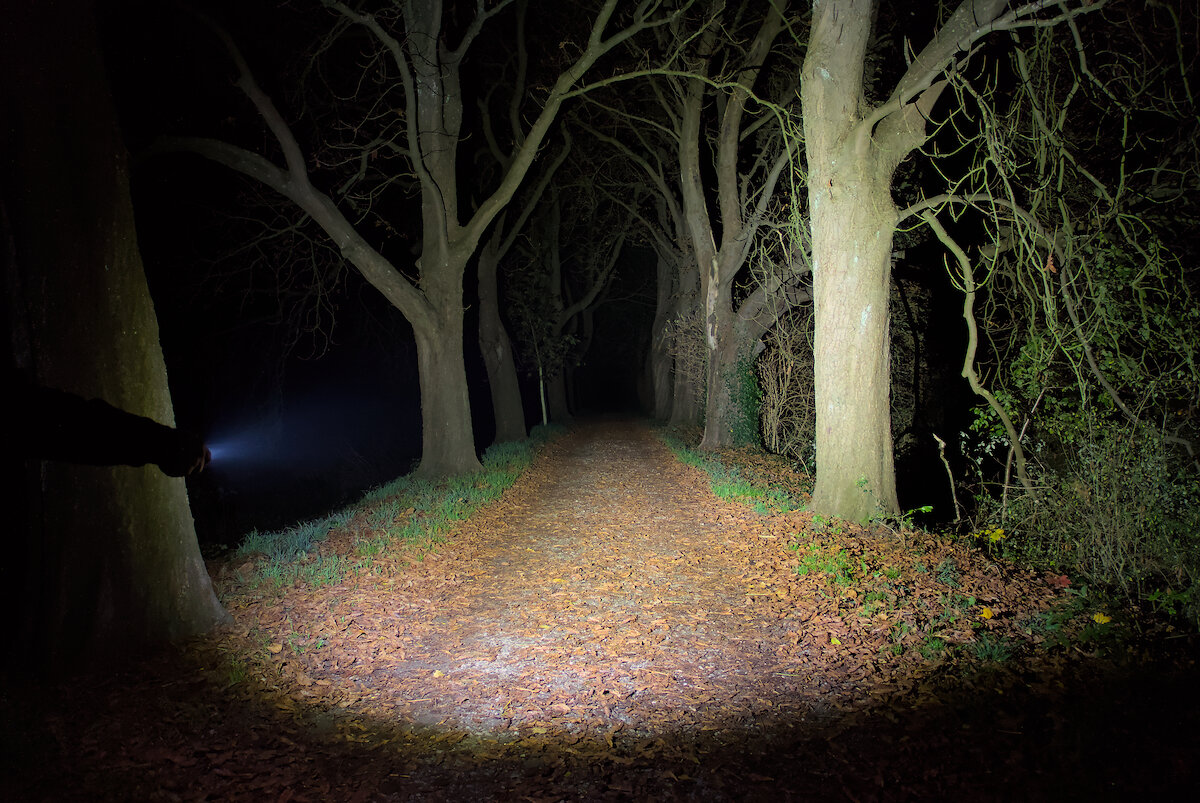
There are 59 LEDs in the side light: 22 each for the warm white and cool white floodlight and 15 RGB LEDs. Unfortunately, the manufacturer does not provide more details about the LEDs.
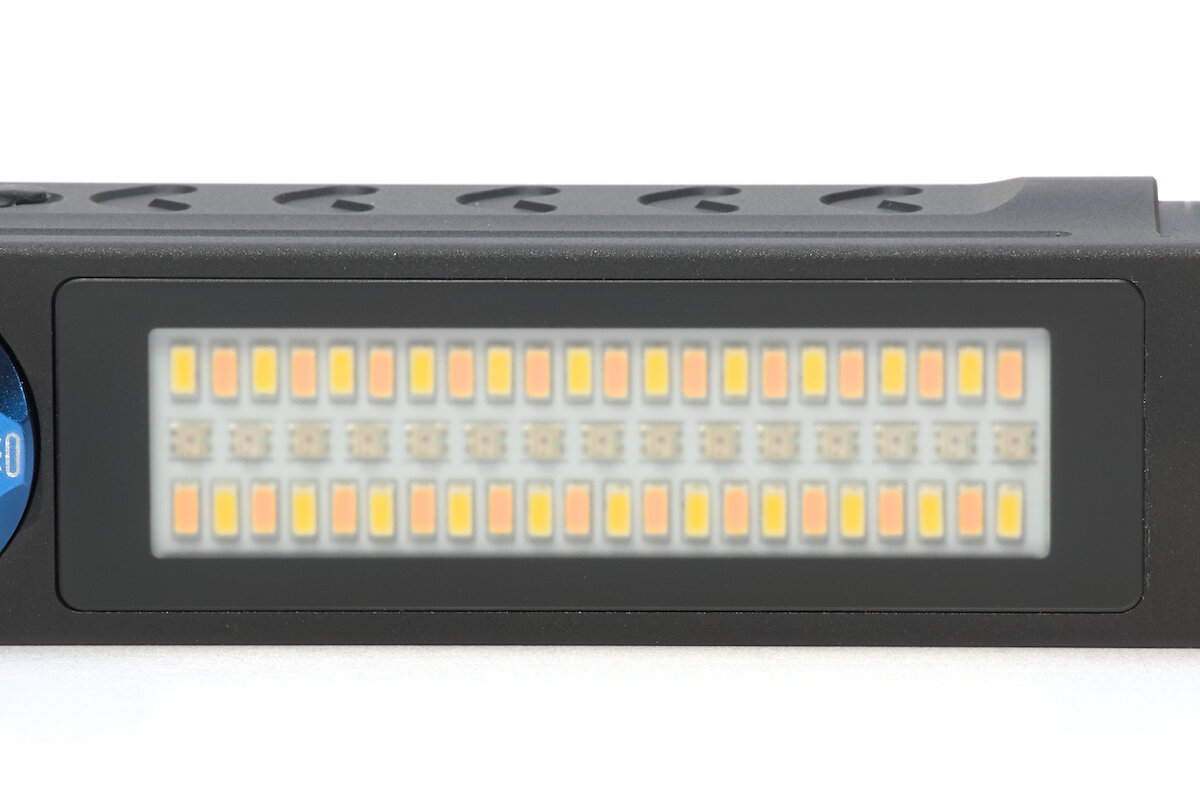
The glass is slightly frosted. However, this should not have any significant effect on the beam. The disadvantage of a glass of this size is that it is likely to be as susceptible to damage as the display of a smartphone.
Thanks to its wide beam, the white floodlight is perfect for close-range use, for example for reading, in confined spaces or for marking your own position. It can also be used as a work light, although a stronger magnet would be helpful.
The 15 RGB LEDs are a nice gimmick, but also have practical uses. For example, they can be used as a position marker, as an improvised bicycle rear light or for mood lighting. Various effects are available for the latter.
Driver and runtime
Compared to the previous generation, the driver of the IF23 Pro has been upgraded. According to the data sheet, it now uses a buck driver for the spotlight, which allows for a better regulation of the brightness. But actually it is a 6 V boost-driver. The side light still uses a FET driver with direct-drive.
| Mode | Brightness¹ | Runtime¹ | Intensity¹ (Throw²) | Current³ |
|---|---|---|---|---|
| Spot: Turbo | 5000 lm | 2 h | 12 775 cd (226 m) | 12.00 A |
| Spot: High | 1300 lm | 3 h | 3 575 cd (120 m) | 2.02 A |
| Spot: Medium | 550 lm | 6 h | 1 500 cd (77 m) | 0.78 A |
| Spot: Low | 100 lm | 30 h | 265 cd (33 m) | 0.17 A |
| Spot: Moon | 5 lm | 350 h | 15 cd (8 m) | 0.01 A |
| Flood: Turbo | 750 lm | 3.5 h | 435 cd (42 m) | 3.80 A |
| Flood: High | 400 lm | 4 h | 250 cd (32 m) | 1.14 – 2.00 A |
| Flood: Moon | 0.5 lm | 850 h | ––– | < 0.01 A |
| RGB | ––– | 40 h | ––– | 0.08 A |
| Off | 290 µA |
¹ According to manufacturer ² ANSI FL1 ³ Measured
My measurement of the runtime in the tested modes matches the manufacturer’s specifications almost perfectly. However, the brightness is not really kept constant, as it starts pretty early to step down from time to time.
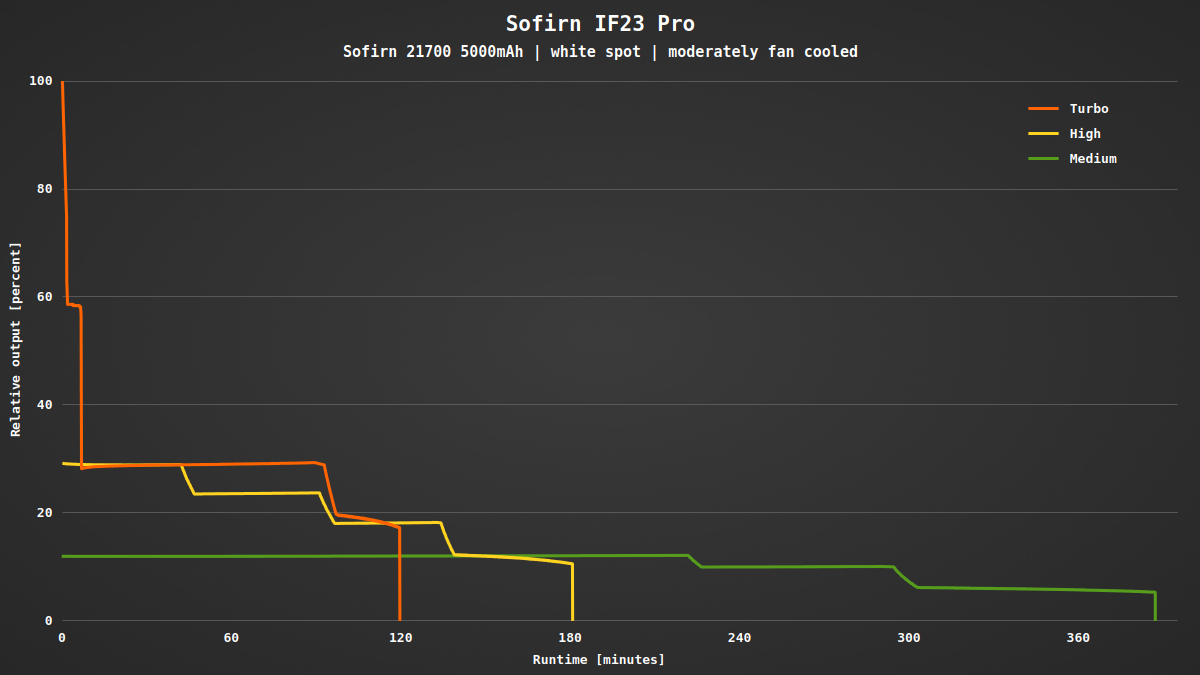
In turbo the temperature rises quickly in the first few seconds, so that the power is reduced after around 1.5 minutes. Another stepdown occurs a few minutes later.
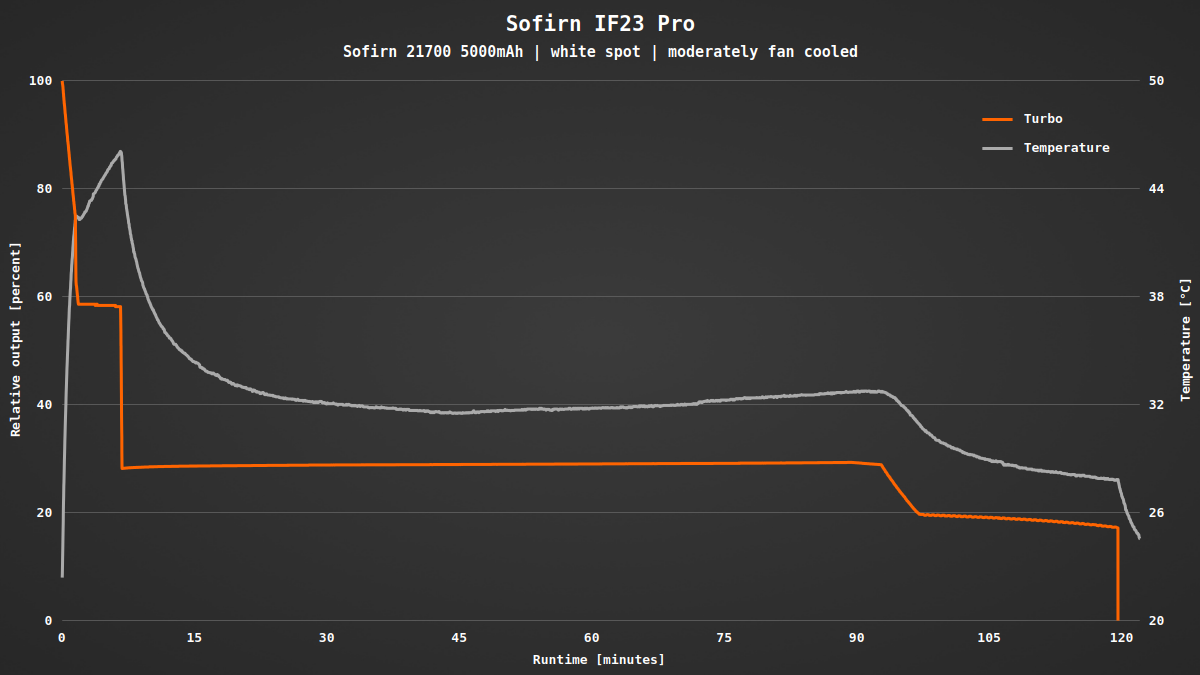
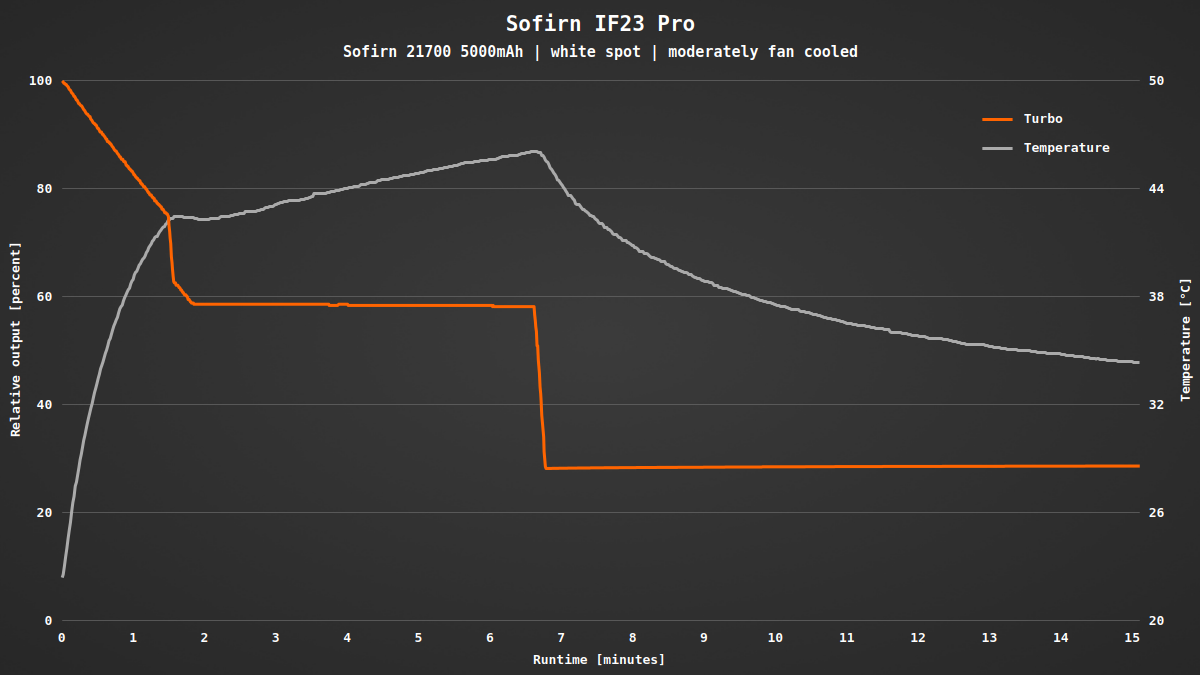
Due to the simple FET driver, the brightness of the side light is not kept constant. At the highest level, a stepdown occurs after just over two minutes, after which the brightness gradually decreases together with the battery voltage.
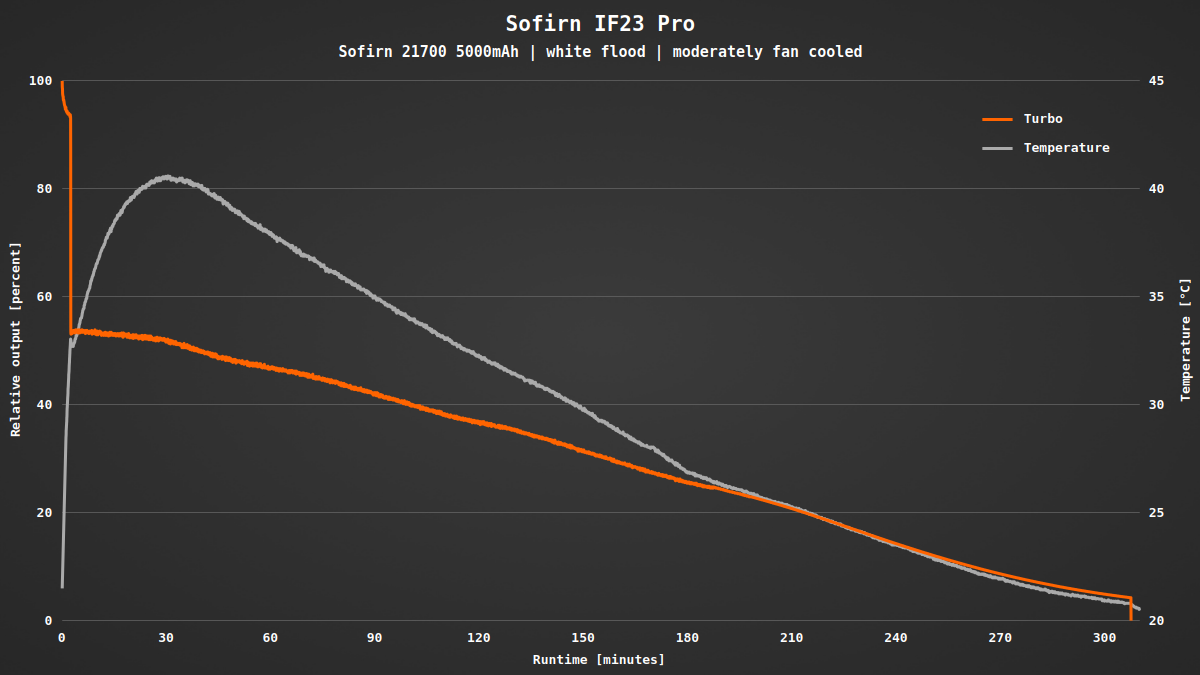
All brightness levels of the spotlight are regulated without PWM. For the white side light I was able to measure a modulation at 20 kHz with the oscilloscope, which changes slightly depending on the mixing ratio.
If the battery voltage drops below 3.20 V, the status LED in the switch flashes red continuously during operation. At a voltage of 2.73 V the flashlight switches off to protect the battery from deep discharge.
Conclusion
The Sofirn IF23 Pro has a lot to offer: a bright spotlight, a floody side light with adjustable color temperature and various RGB effects. It is controlled quite intuitively via a button and a rotating ring. The battery can be swapped easily and the flashlight can also be used as a power bank in an emergency.
On the other hand, some details are not fully thought through to the end: finding the right position of the rotating ring in the dark is a matter of luck, the magnet is too weak to hold the flashlight reliably in horizontal orientation. The spotlight needs more throw to better stand out from the floodlight. Whether you like the flashlight depends very much on your individual requirements.
Got curious? Here you can find the Sofirn IF23 Pro on sofirnlight.com.
